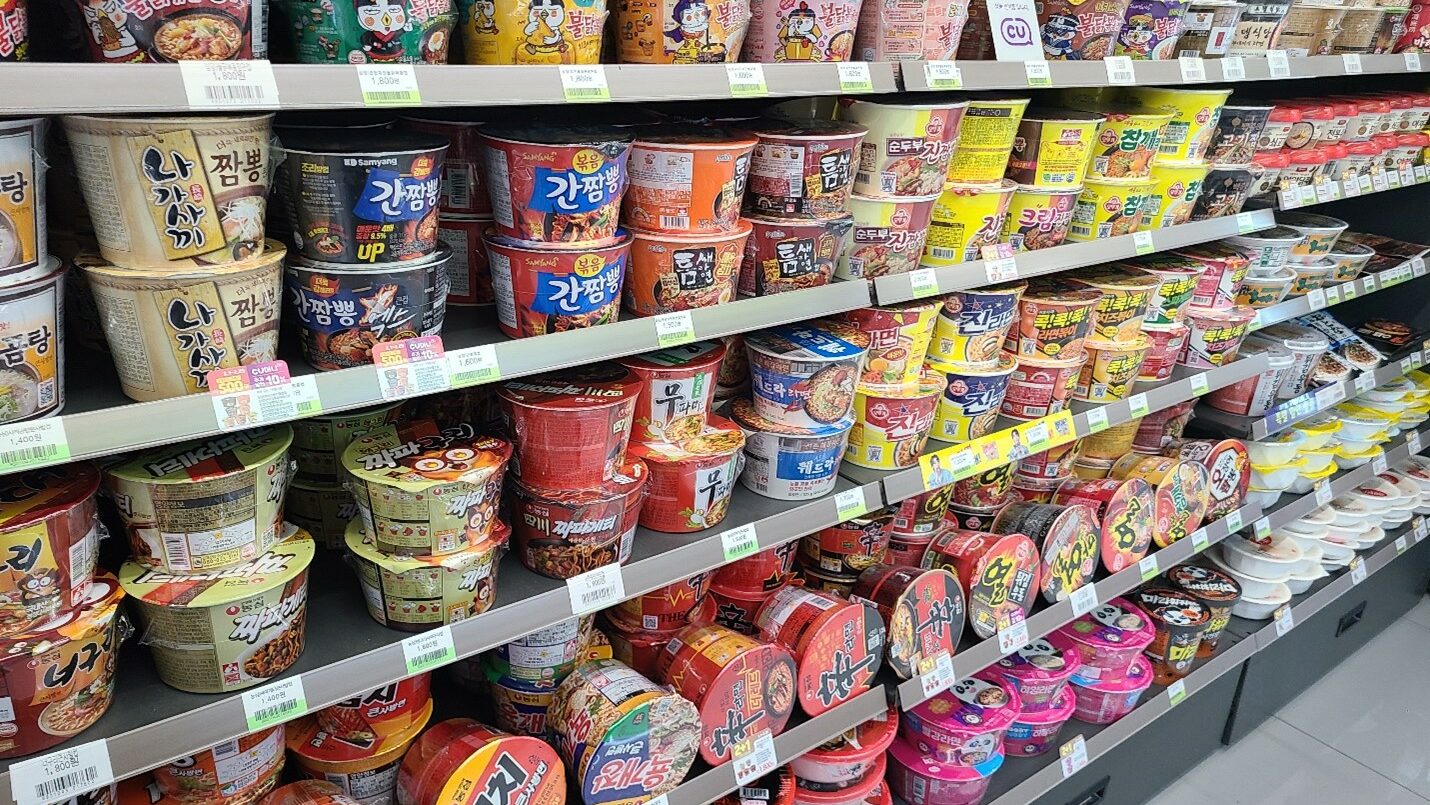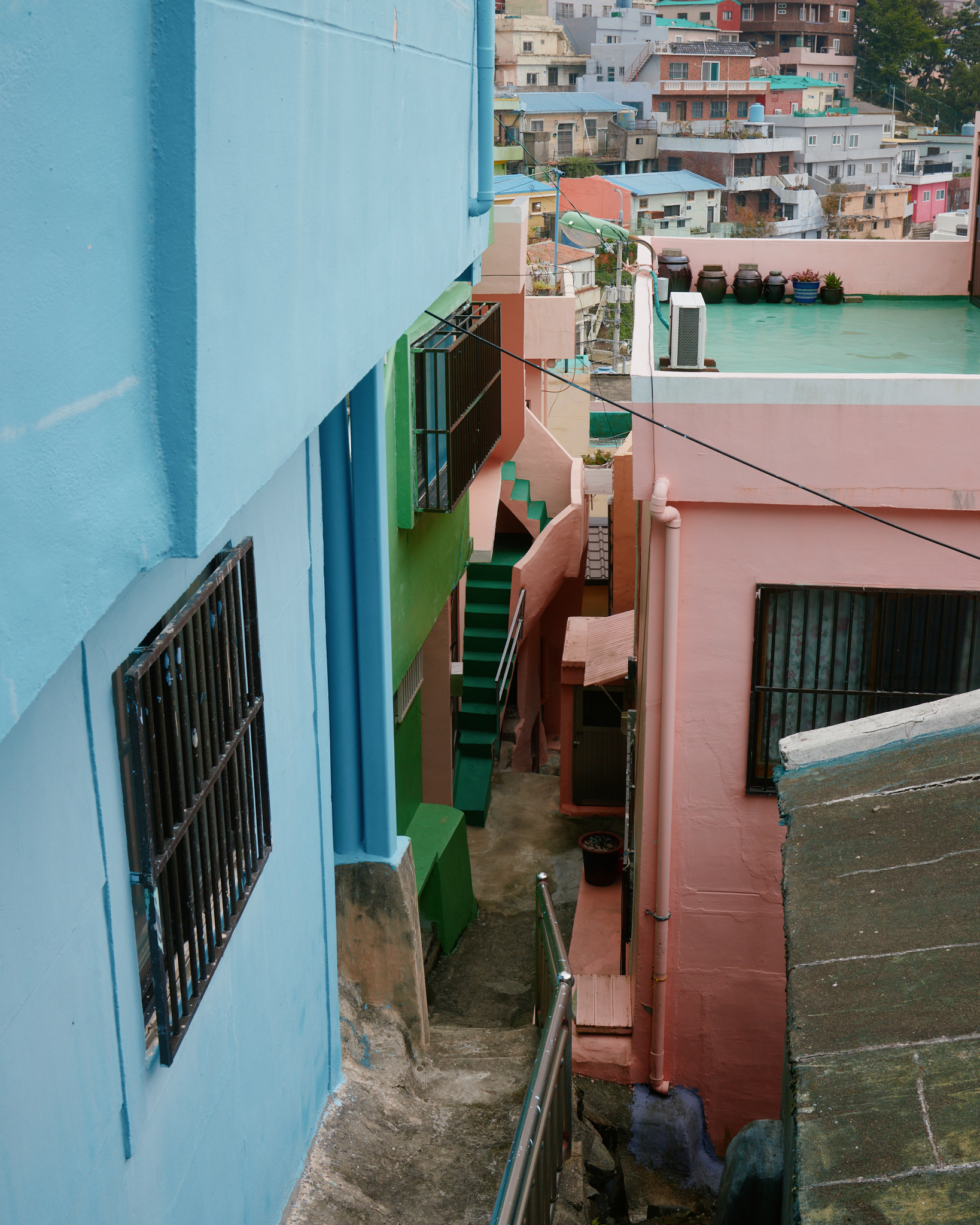10 Reasons to go to South Korea

- The People. Koreans are a joy — and they will get involved in your trip; we suggest you let them
Koreans are among the friendliest and most open people in Asia. That first bellowing call across a busy restaurant will be the waitress shouting across “I have a spare table here for you”. The second from the man two tables down “Hey new friends, join me for a drink” and the third from his wife “Try this dish with the drink, it will taste amazing”.
It can take a little getting used to, but you soon love the rowdiness of Korean people. They'll tell you what to eat and laugh if it's too spicy for you, yell loudly as they “cheers” you with soju and welcome you into their mix. They are a real boisterous, fun and bonkers lot.
The people will be a joyous part of your everyday experience in South Korea. It's a wide and diverse society, but they will always welcome you and have you as a friend within minutes. Being fun, open and friendly: it is part of Korea’s DNA.
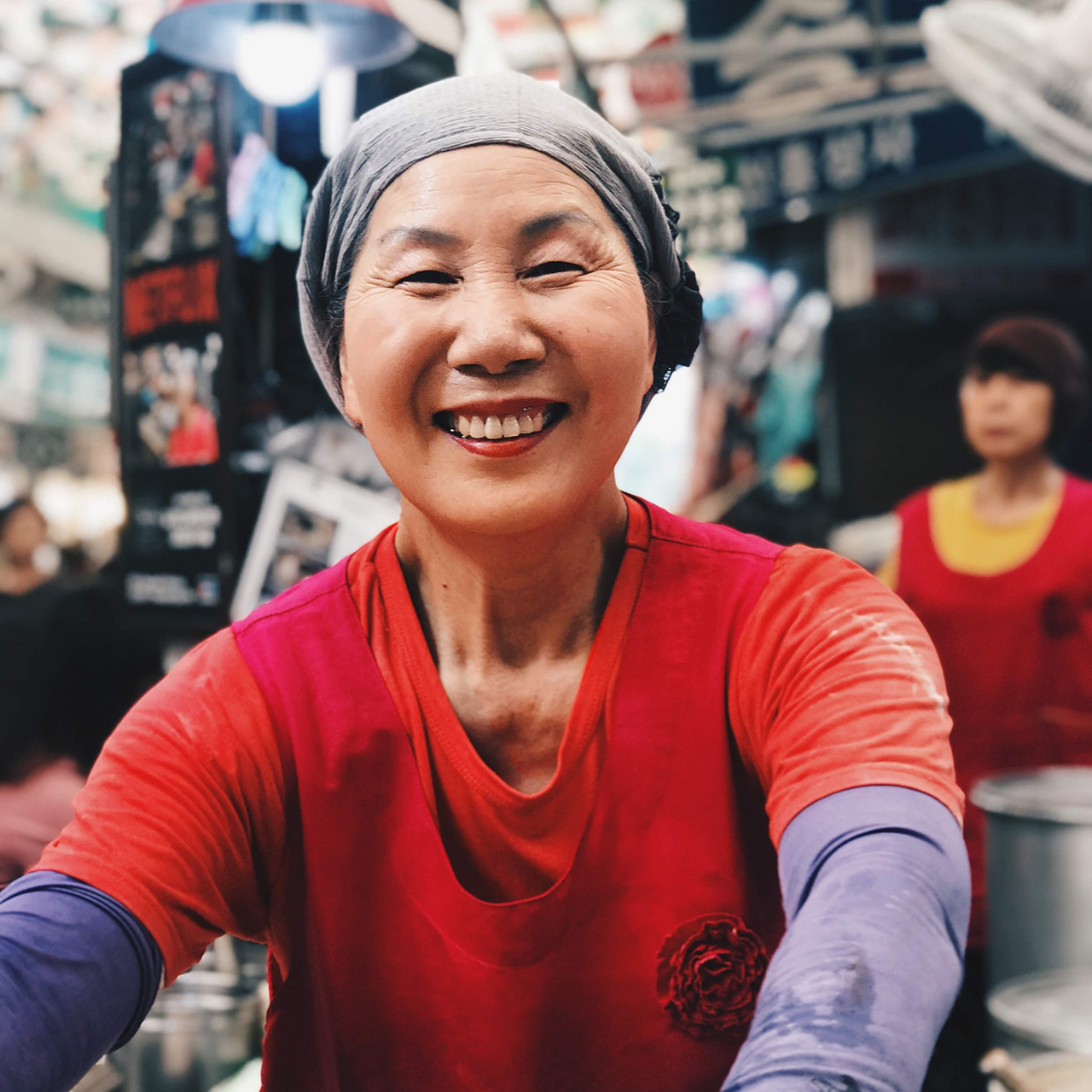
Be sure to smile back!
2. The food culture is an experience unlike anywhere in the world
You get hungry, find a restaurant you like the look of, eat until you’re full and then dinner is done, right? Wrong.
In Korea eating out is an all-night, big group affair and that goes on for rounds and rounds. First to a BBQ restaurant, then move to a chicken place, then to a bar for copious amounts of booze and more snacks. Embrace Korean food culture and you'll be out for hours. The whole country seems to revolve around its meals; the dizzying number of restaurants and street stalls attests to this!
And what of the food itself? It's the product of thousands of years of trying, testing and refining flavors: savory treats that tickle the tongue, nuanced spices strong enough to both gently burn your mouth and heal your spirit, sour and astringent textures that party with your senses, and subtle sweetness filling your palate with warmth. Korean food is a declaration of life, and testament to this passionate culture.
No matter where you go or what you order, most meals come with endless and diverse side dishes (called banchan) that quickly crowd the table to bursting. One of our absolute favorite places to experience this is Makgeolli Alley, in the foodie paradise of Jeonju. Here, you don’t even order anything off the menu. You only order how much bubbly makgeolli (rice wine) you want — enough for 2, 4, 6 people or a small elephant. The food is attached to the order and just comes — kimchi pancakes, tofu, blisteringly spicy soup, a whole fish (or two!) and more until you can’t eat another bite or drink another drop.
A trip to South Korea is a feast for the senses and eating out is a feast for the soul.
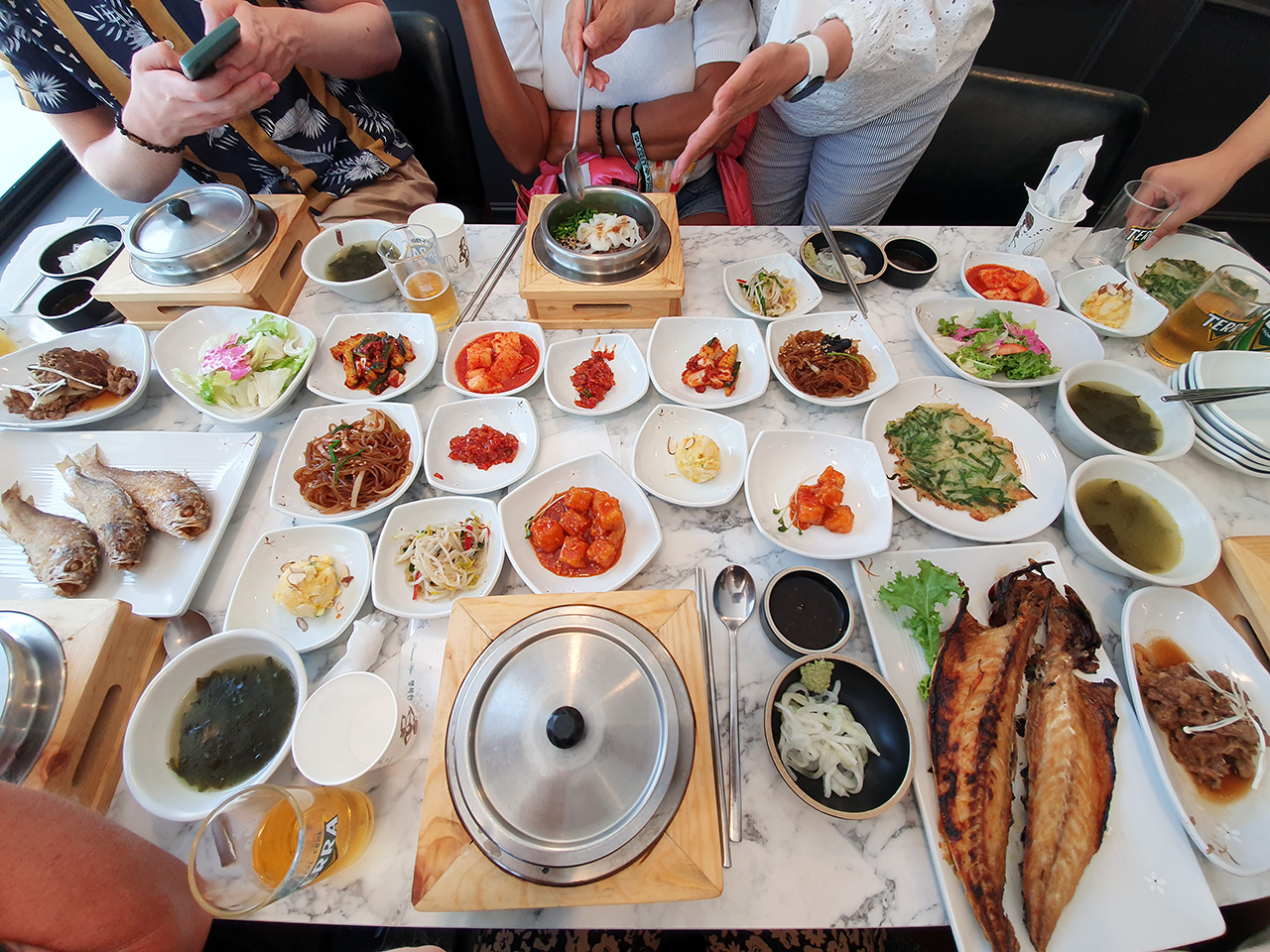
Banchan, a typical assortment of side dishes
3. The hiking is world class and extremely accessible from the cities
If you like to keep active on your travels (you might feel the need to after all that food), then Korea is perfect for you. 70% of South Korea is mountains, and there are 22 national parks to choose from.
Hills dot the landscape both in and out of the cities and you’re never further from a trail than a quick walk or ride on local transport. Forested trails that crisscross the hills sprinkled across the cities are a delight: they’re the perfect place to get some active exploration while you go about seeing the country. And they’re extremely approachable from a time and difficulty perspective; you can pop on a 30-minute jaunt through a forest with gentle slopes for a nice city break without even needing to leave the city.
For more dedicated hiking, there are striking national parks across the country, not to mention three trails that span the length of the west, south, and east coasts.
Transportation to and from popular entry points is accessible and simple, and the services around major national parks have everything you need from maps to food stops. And, of course, there are hikes for all levels; from peaceful river strolls to steep and rocky mountain climbing full of waterfalls and beautiful views.
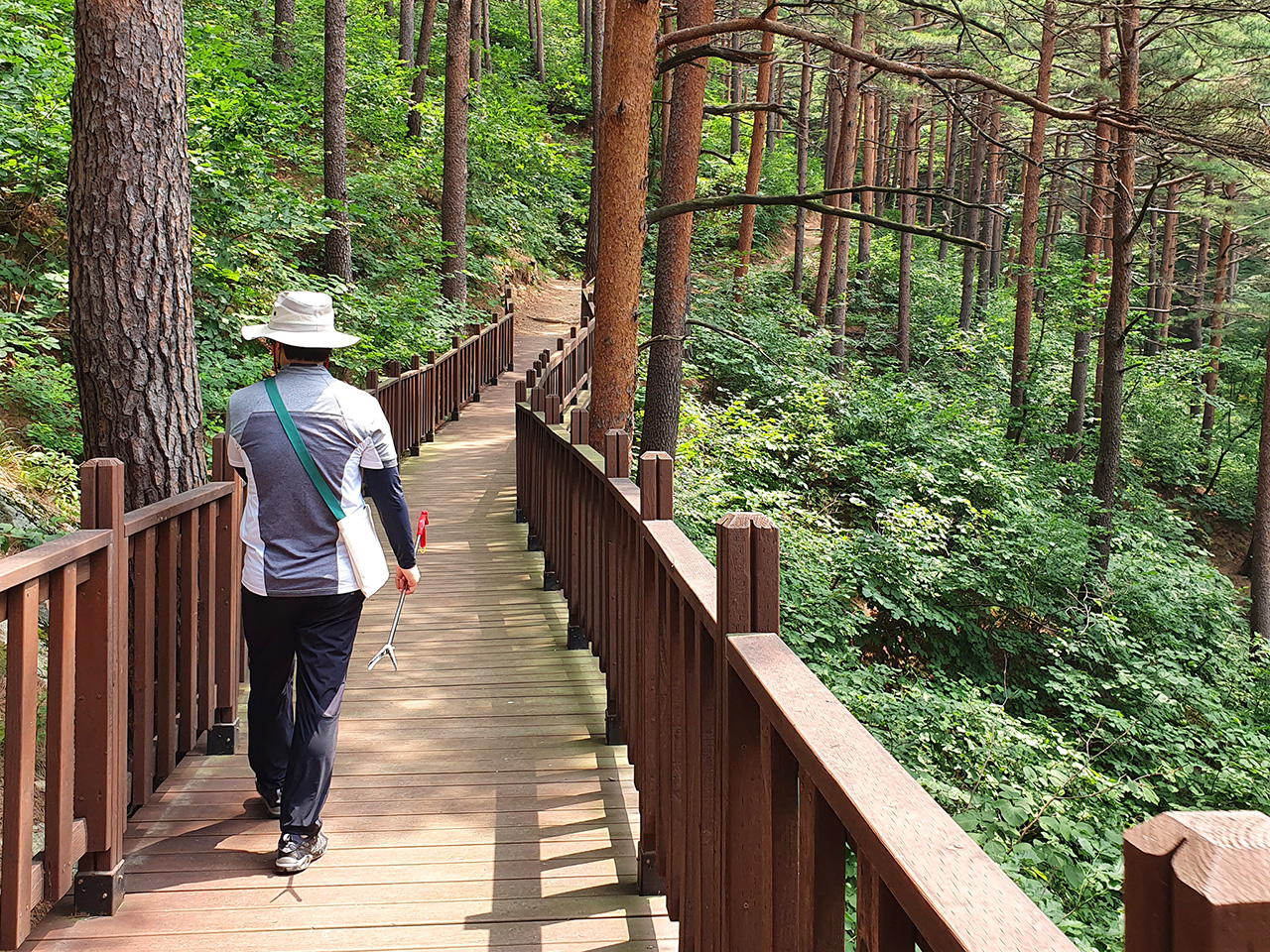
Nature is never far away from you
4. The beauty and diversity of its seasons: Spring, Summer, Fall, Winter... and Spring
Unlike much of Asia, South Korea is a year-round destination with 4 distinct seasons, each wearing their own charm with passionate enthusiasm.
Come in the spring for the cherry blossoms you’ve never heard of and the colorful festivals that decorate the cities. Summer is beach season — go surfing on the east coast in Gangneung or diving in Jeju Island, or escape the humid heat for a quiet retreat in the heart of the mountains.
Autumn flames across the country in hues of deep orange and red and is the perfect time to hike the one of the 22 national parks that sprawl over the country. Head over during winter to see the palaces decorated in dramatic snowy scenery, or experience the world-class ski resorts of Pyeongchang.
Korea’s seasons will embrace you, delight you and make you fall in love with their myriad of colors, songs and exclusive flavors.

Temples are often surrounded by nature
5. A rich history and deep sense of tradition
Don’t let the bright lights and shiny buildings fool you into thinking that Korea only has eyes for the future, Koreans have a proud sense of identity and a strong connection to their past.
You’ll see Korea’s vast and fascinating history everywhere: ancient walls dotted across city and countryside, statues — old and new — in parks, islands and mountains, and temples, tombs and monuments peacefully coexisting with skyscrapers and wilderness alike. It’s got cultural villages where each picture-perfect little building remains someone’s home — and perhaps your home too for the night.
Seoul itself has not one but five royal palaces, all unique in their own way, with dramatic gates and vibrant colors adorning every wall and roof.
For those of us who want to go even further back, a trip out to Gyeongju gives a glimpse of the capital of the Silla Kingdom, which ruled much of the Korean Peninsula between 57 BC and 935 AD.
One of our favorite places to peek into the past here is the UNESCO World Heritage sites of Seokguram Grotto and Bulguksa Temple. These two sights contain some of best and most important examples of Buddhist sculpture and architecture in the country!
Fast-forward thousands of years to recent history, and just an hour north of Seoul you’ll experience a sobering reminder of South Korea’s ongoing conflict with the North: sterile buildings, barbed wire, land mines and watchtowers. The demilitarized zone (DMZ) is a different world to what many of us are used to, and it’s part of the country’s living history.
Keep one eye on the past during your South Korea vacation adventure to get a much richer understanding of the traditional influences that have shaped the country, and everything will, well, make much more sense.
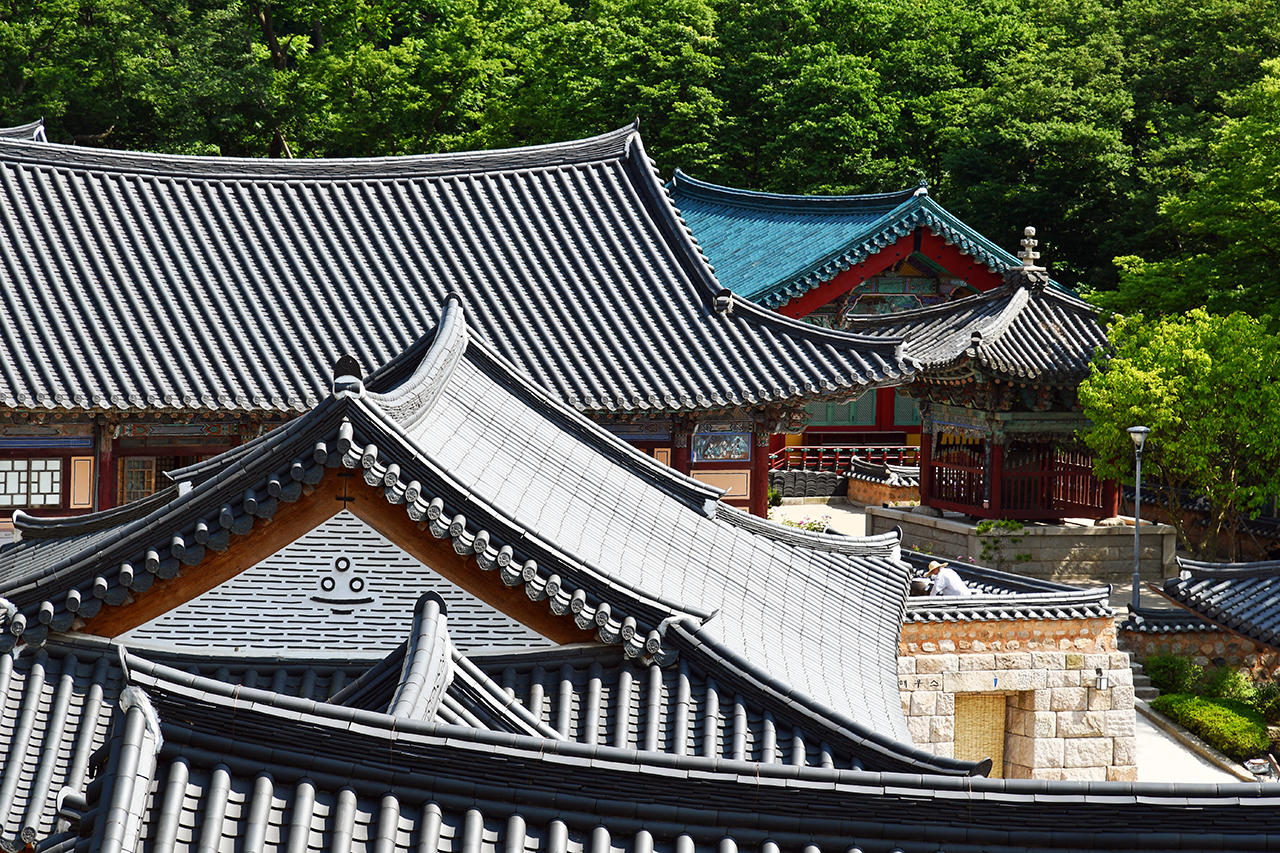
Traditional roofs have a meticulous design
6. Contemporary Korea is vibrant, fun and hurtling towards the future
You might already be more connected to Korea than you think. What car do you drive? What phone do you use? What was the last hit TV series you watched? Almost without realizing, the world has found itself leaning into Korea more and more, and the modern side of Korean culture is waiting to amaze you, amuse you, and (sometimes) confuse you during your trip.
Korea’s cities offer some fabulous modern hotels and some eye-catching contemporary architecture. The soaring skyscrapers of Seoul and Busan make it clear that these are two cities that are rushing headlong into the future. Experience it at the Lotte World Tower (Korea’s tallest building), where those with a head for heights can cross the 11-meter “sky bridge” that links the tower's paired spires 541 meters above street level.
You’ll feel it as you browse the boutiques in Gangnam or stroll between gleaming tower blocks and the ocean at Haeundae Beach. Or by asking one of the roaming robots for directions at Hyundai, Korea’s first eco-friendly future-concept department store.
Wander down K-Star road and spot your favorite idols "art toy statues" or even a glimpse the star themselves, if you’re lucky. Join the locals for after-work drinks, then dinner (and more drinks!), then party the night away to a backdrop of K-pop energy, as you let the Hallyu wave flow over you!

LED lights and sleek design are part of everyday life
7. The art spills out of galleries and museums into the street
Korea’s love of art, design and beauty is evident everywhere – and wonderful.
As well as its world-class museums and galleries there are installations and street art aplenty in both cities and countryside. It makes strolling the streets a joy, we recommend some aimless wandering just to see what you find.
In Seoul, just steps from the futuristic Dongdaemun Design Plaza, you can find the charming Cheongyecheon Stream, an oasis of calm below the city streets which features an ever-changing range of art displays throughout the seasons.
Whilst traversing the Han River, Banpo Bridge turns on its extravagant light and water fountain display each night for a visual display to rival that of the Bellagio.
A trip to the serene Ihwa Mural Village in Seoul is a delight, especially getting lost in its narrow alleyways; but for true artistic beauty you cannot look further than the Gamcheon Culture Village in Busan where art murals and sculptural pieces are dotted throughout the valley of pistachio and peach houses that make up the neighborhood.
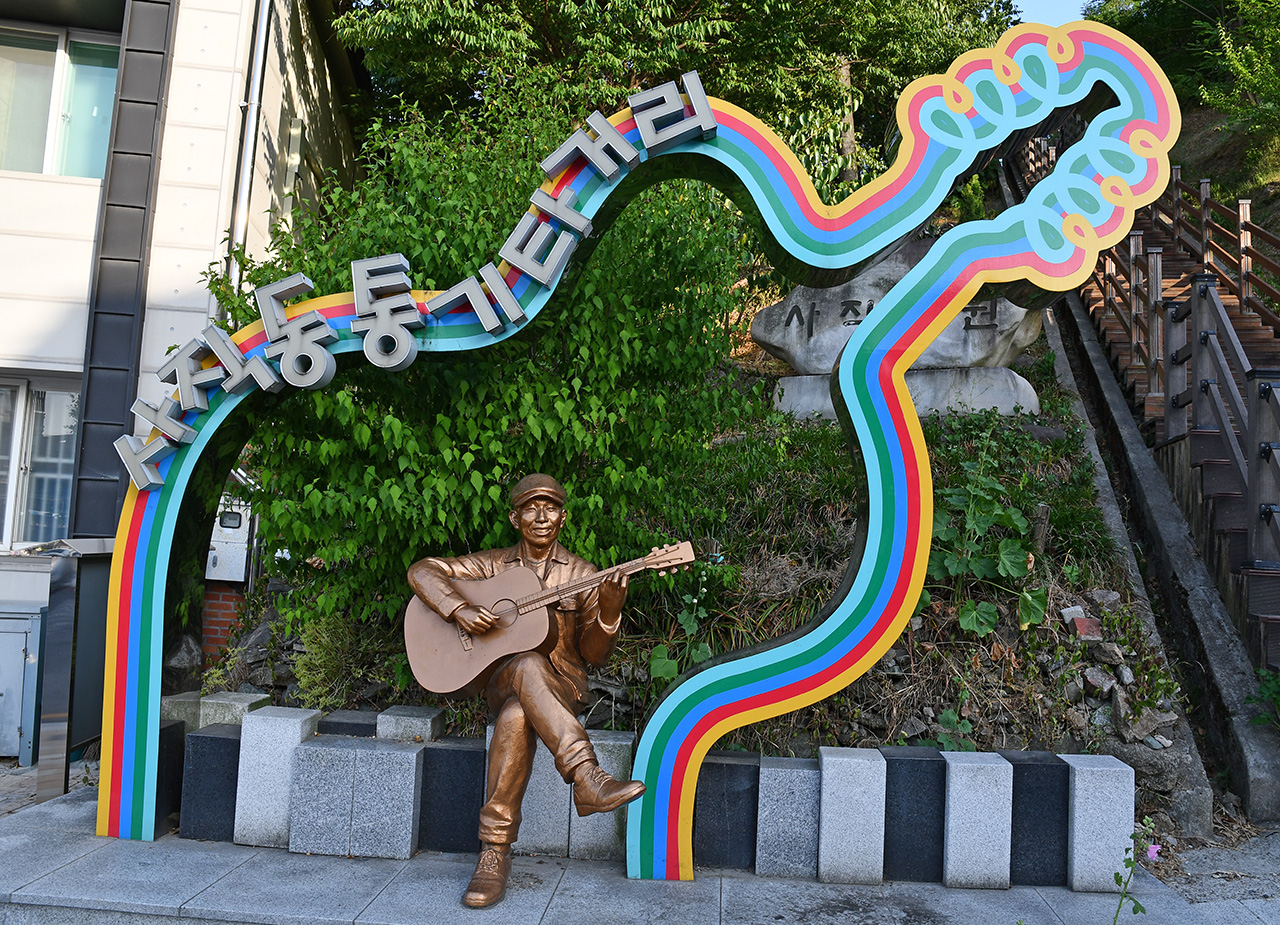
The arts are flourishing ubiquitously
8. The cafe/bar culture is booming, and fun
It can feel as though Korea is 70% mountains and 30% trendy coffee shops. From converted hanok houses, to deep inside the warehouses of Seongsu (the Brooklyn of Seoul), beachside shacks in Jeju or boutique roasteries in Gangneung, you’ll find cafés in the most unlikely places. Not just unique, aesthetic venues on offer, but quirky takes on the traditional latte too – purple sweet potato flavor anyone?
But the fun really starts in the evening; if New York is the city that never sleeps, then South Korea is the country that never sleeps. It can feel as though the whole population is out hitting the soju until the early morning hours – join the locals who crowd the pojangmacha tents that line the city streets at night.
If you prefer something a little more refined (or just less rowdy), a plethora of craft breweries have popped up in recent years, or try a chic rooftop bar with cityscape views.
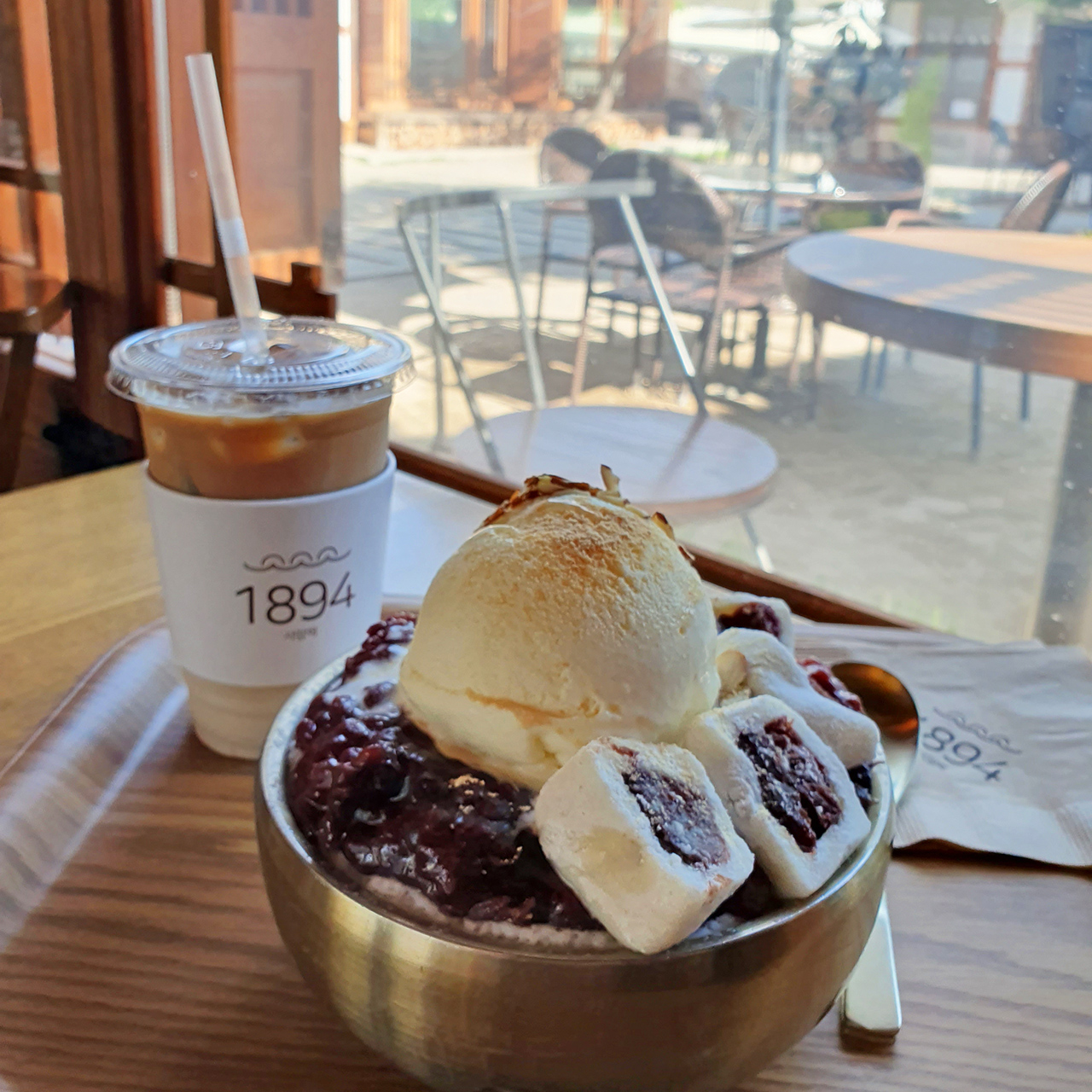
Coffee, tea, and endless nibbles: make sure to try different cafés!
9. Jeju Island — the Hawaii of South Korea
It’s hard to overstate beauty of Jeju. Though just an hour’s flight from Seoul, Jeju has a rich, indigenous culture all of its own.
Jeju is best known for its startlingly beautiful countryside, which all races up to Korea’s highest mountain – 1,950 meter-high Hallasan (it’s not that hard to climb if the weather agrees). Landscaped gardens filled with cacti and bonsai, staggeringly beautiful waterfalls, ringed by beaches, museums dedicated to everything from teddy bears to sex to modern art, a volcano to climb... honestly, we could go on and on. Even the two cities, Jeju City and Seogwipo, are lovely.
And your island adventure need not start and finish with Jeju; a short ferry-ride away is Udo, which somehow contrives to be even more bucolic, and makes a grand place for a bike or buggy ride. Connected to Udo is the tiny islet of Biyangdo (current population: two), which was once a base for the haenyeo, Jeju’s most famous residents: the legendary, free-diving “sea women”, some of whom still ply this perilous trade well into what most would call retirement years.
There is simply no better place to contrast with South Korea’s always-on, contemporary culture.
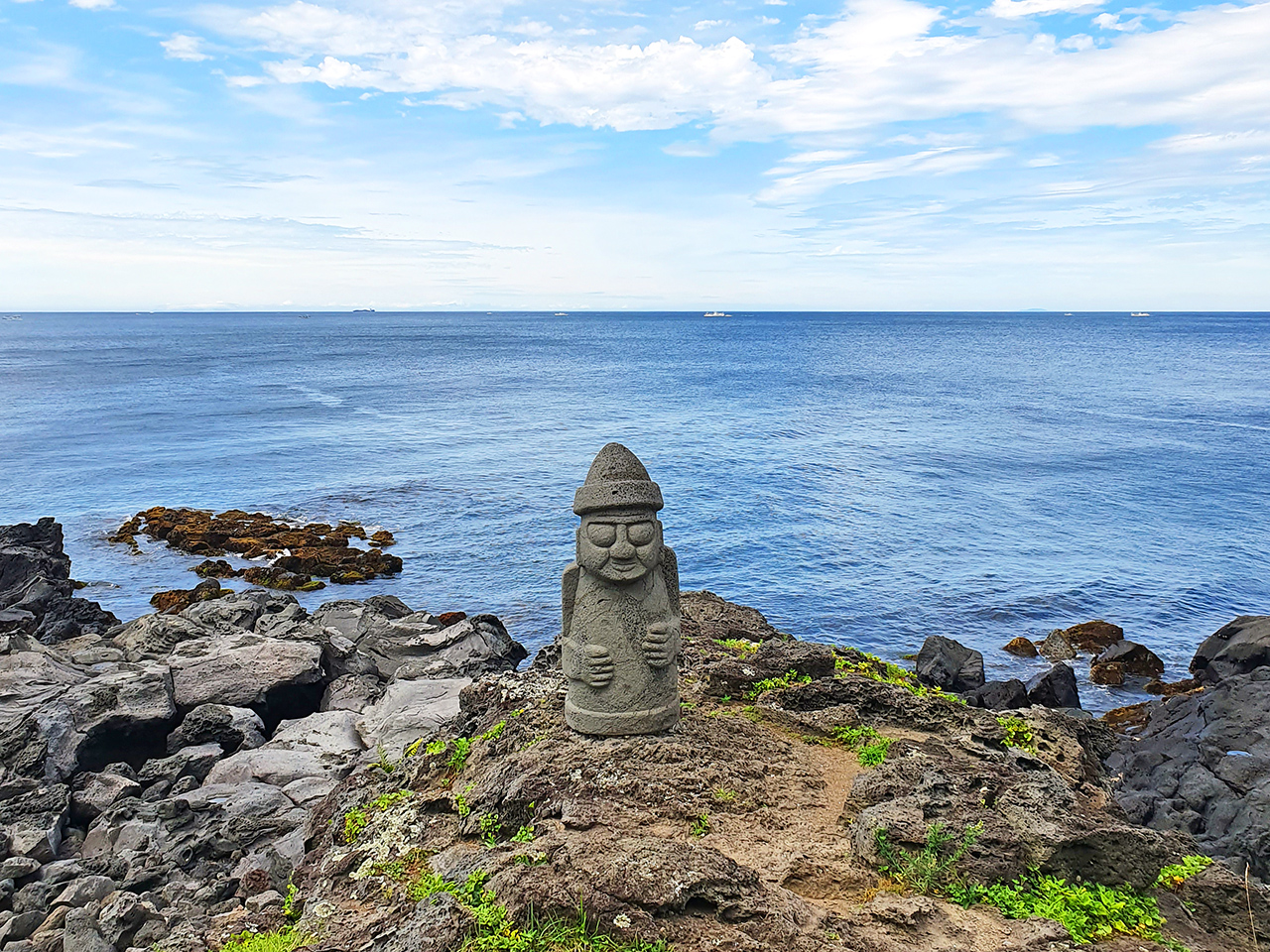
These stone statues are the signature mark of Jeju island
10. You can have it all in this beautiful country of contrasts
South Korea’s eclectic, dramatically diverse experiences and startlingly unique culture mean you can have it all in one trip: art, history, food, tradition, futurism, coast, mountains and fun.
You’ll first be welcomed by skyscrapers, museums, and street art around every corner; in the same neighborhood, you’ll suddenly find yourself strolling through vibrant ancient city temples, with the smell of incense and the sound of monks leading practitioners in Buddhist chants.
Korea is a country that works hard and plays hard — in the restaurants and bars, but also in out in nature — green spaces, parks, mountains abound. There are island getaways and vast rural areas. There really is something for everyone – but that something will be uniquely Korean.
South Korea keeps you on your toes, expecting the unexpected. It’s brilliant.
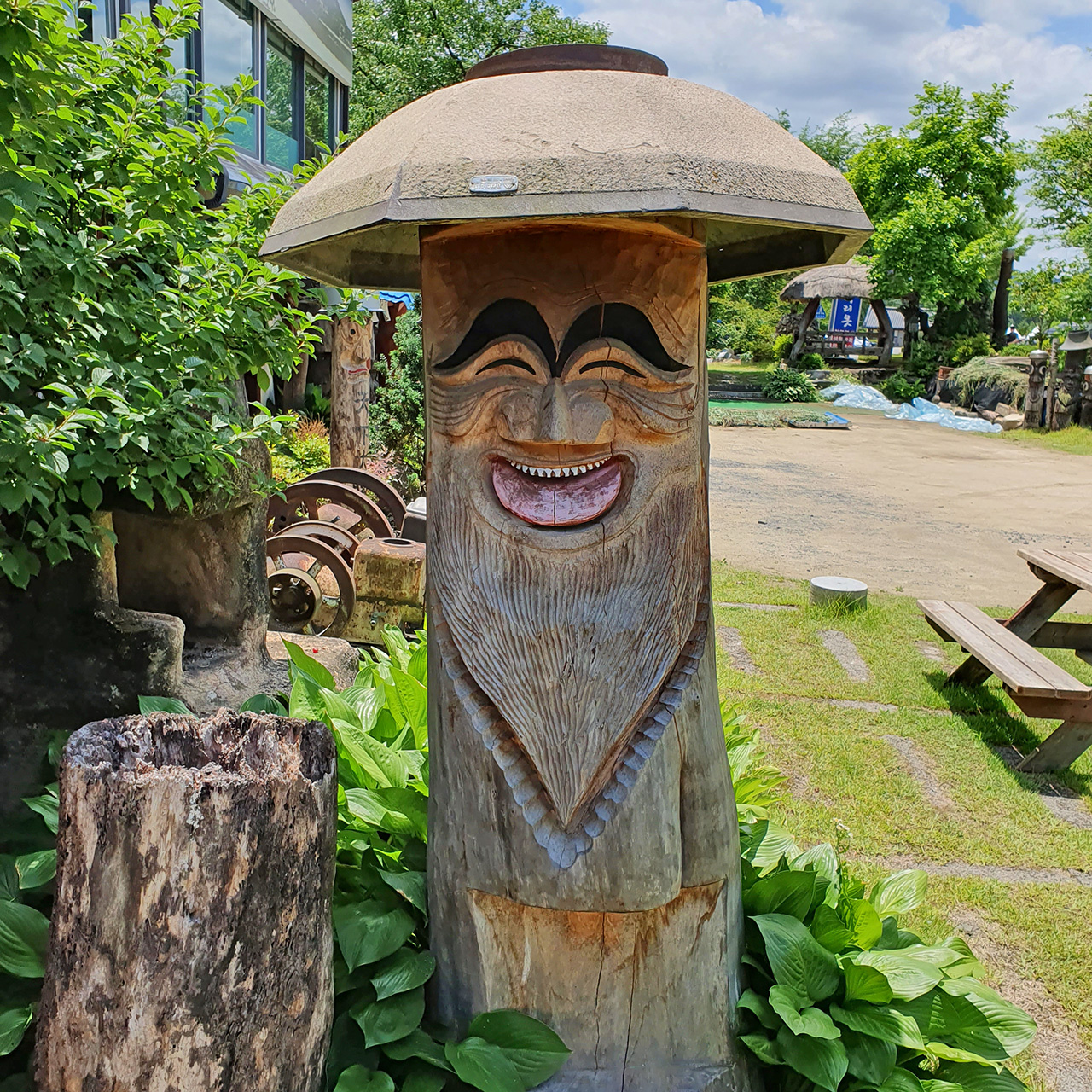
Even the statues will welcome you!
Feeling inspired to visit South Korea for yourself? Explore our favorite routes here.
You can also download our South Korea brochure here.


